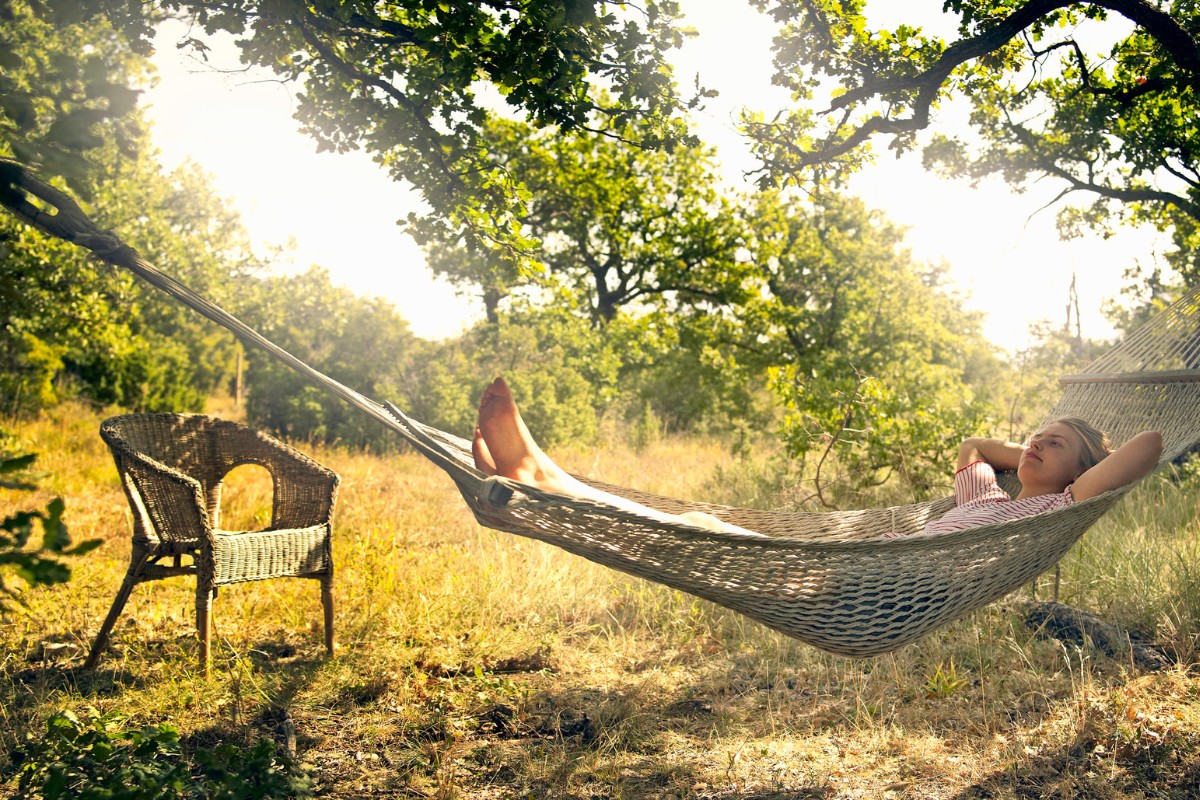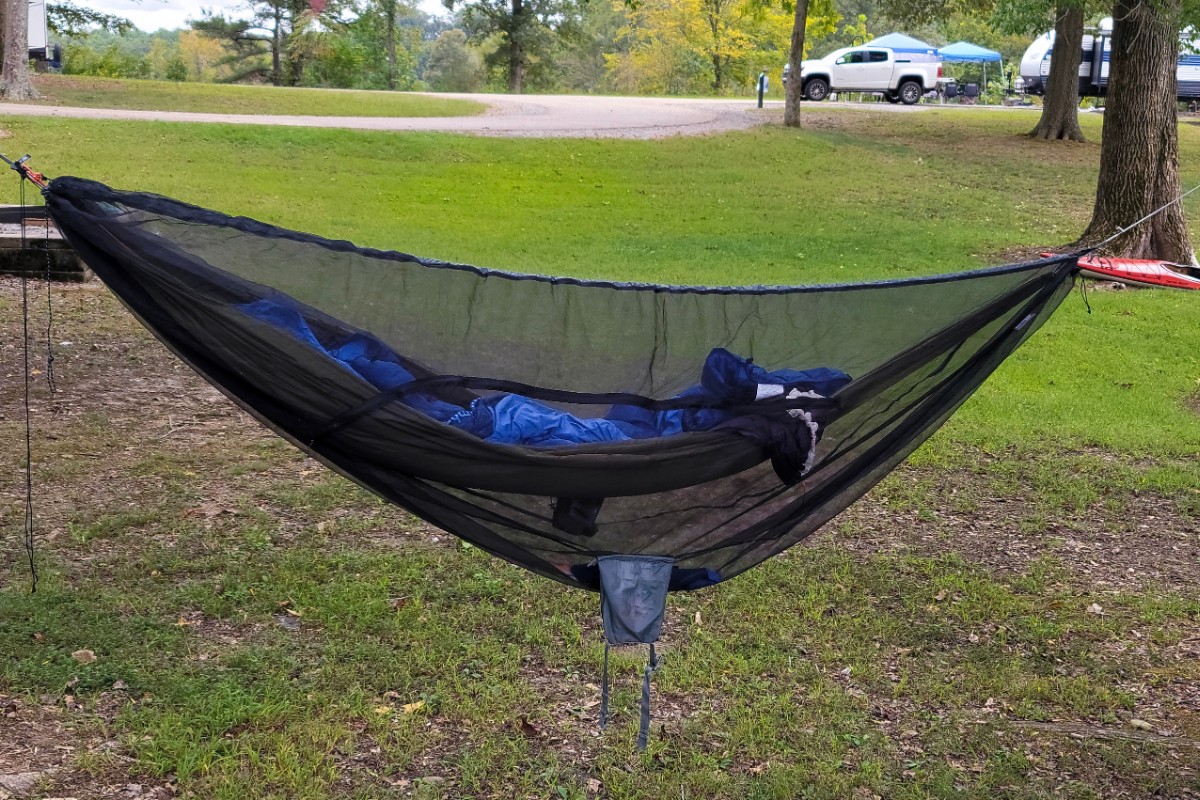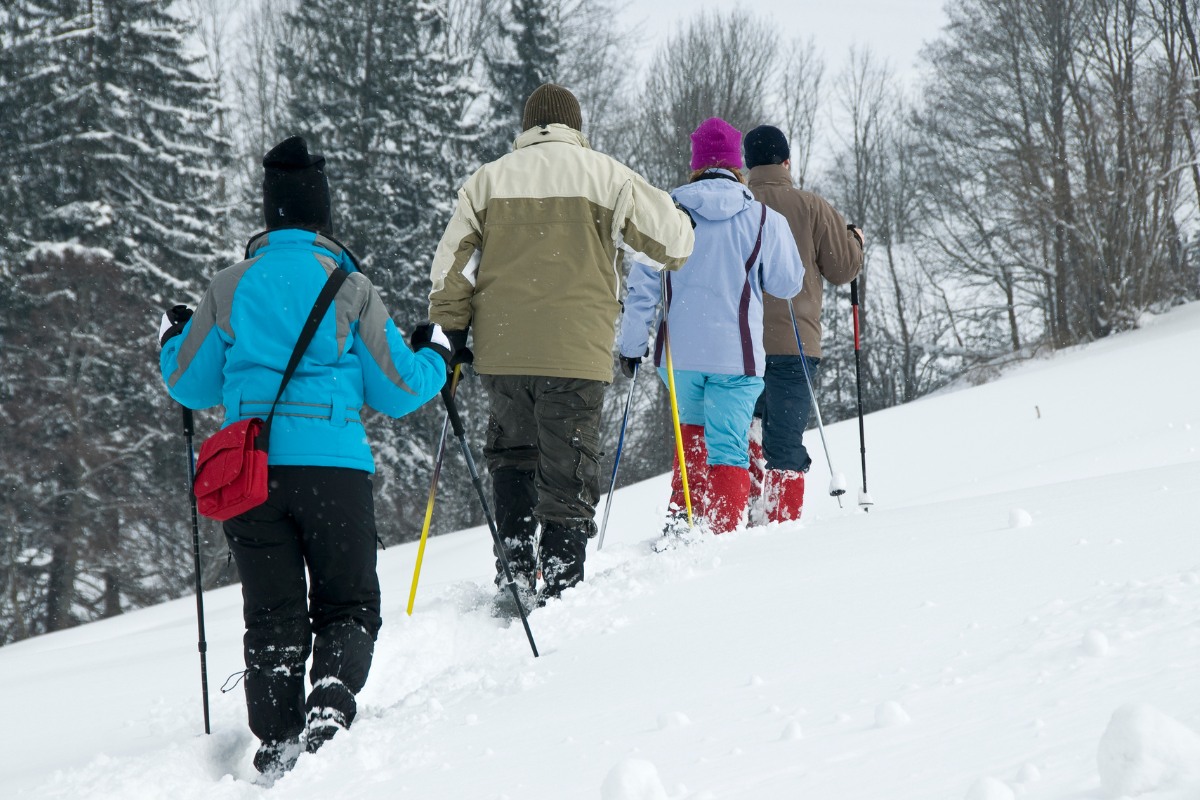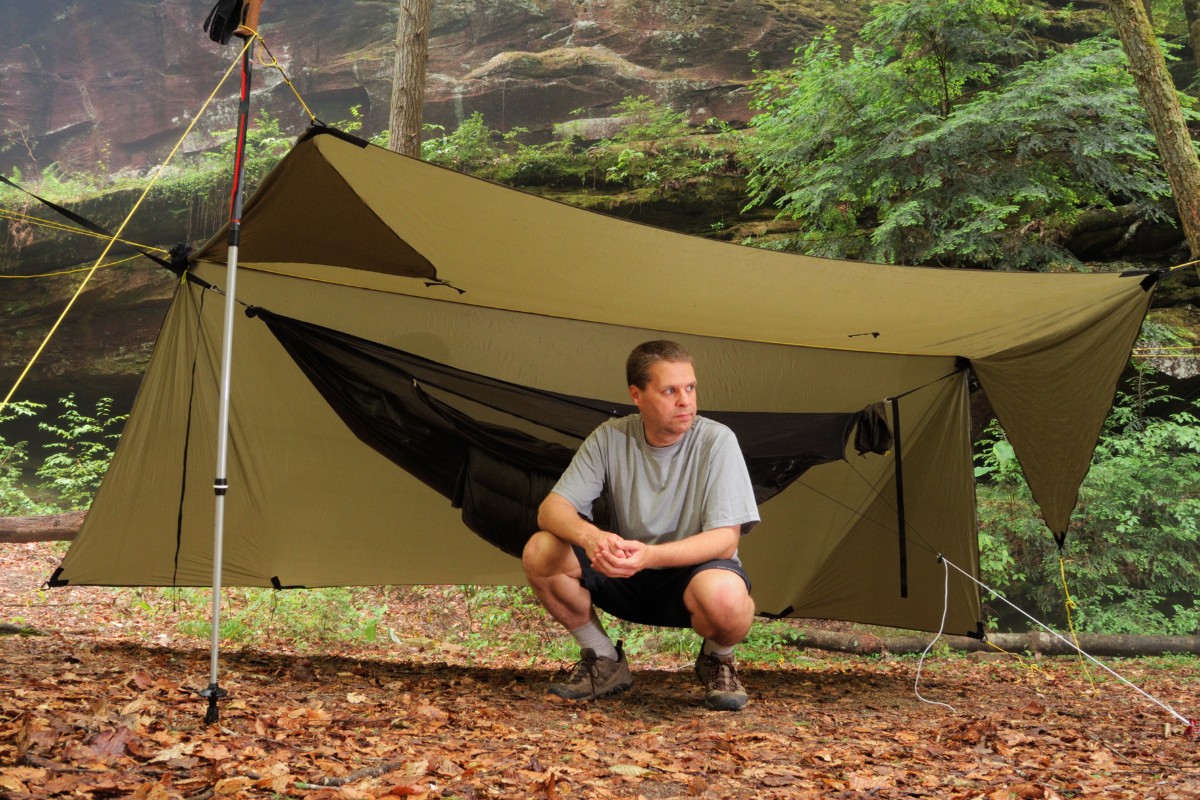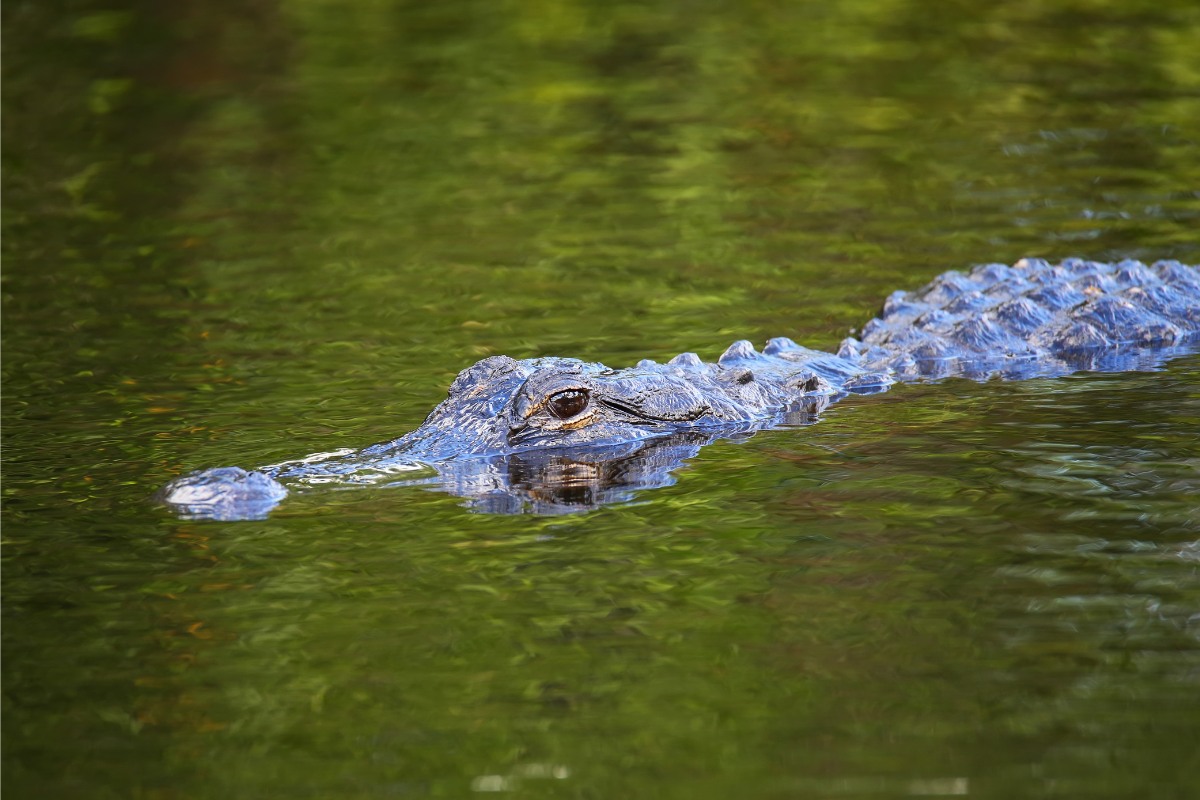Hammock straps are a significant component of the hammock suspension system. They are long pieces of webbing, with one end wrapped around trees or fixed anchors and the other end connected to the hammock to hang it above the ground. They are used for both lounge and camping hammocks.
However, this simple hammock accessory can become complicated when you dive deeply into it, especially for backpack camping hammock suspension. If you ignore the nuances and casually choose a strap, you might end up hitting the ground.
In the rest of this article, We’ll tell you everything you need to know about hammock suspension straps and help you choose the right one for your next camping trip.
Why Use Straps Instead of Ropes
You might wonder why not choose a simpler and more convenient rope to hang the hammock.
As an important rule in the Leave No Trace outdoor ethics, we campers have an obligation to protect trees when we hang hammocks on them. A rope is much narrower to wrap around the tree, causing more weight distribution on the trunk, which can damage the bark or even kill the tree. Straps wider than 1″ are tree-friendly and help avoid such issues.
So, please use wide straps rather than thin ropes to minimize any adverse effects on the trees.
Types of Hammock Straps
Most hammock vendors sell the hammock and suspension straps separately, so you need to buy extra straps if you don’t have them yet. Generally, a gathered-end camping hammock often comes with a continuous loop connected with clips, hooks, or carabiners; a bridge hammock comes with aluminum spreader bars and suspension triangle dogbones made of Amsteel for hanging.
There are two main types of hammock tree straps:
Daisy Chain Straps
Daisy chain straps have sewn loops over the whole length as attachment points, each loop is 3-5 inches apart with a total of 20-30 points for adjusting. It’s the easiest strap for newbies to start their hanging journey; just clip the carabiner to the next lower or higher loop to achieve the perfect hang, with no learning curve.
Due to the loops being sewn in fixed lengths, you can’t adjust the daisy chain strap to any length you want, so it’s not 100% length adjustable. Besides, this type of strap is actually in a double webbing mode, so the weight is greater than the same size regular tree strap.
Regular Tree Straps/Huggers
Tree straps and tree huggers are names for the same or similar strap; some vendors use the two names interchangeably. However, some vendors like Dutchware and some advanced campers differentiate them in this way: tree straps have a single loop sewn at one end, while tree huggers have two loops sewn at either end (I’ll use this definition in the rest of the article).
They both feed one end through the loop end to wrap around the tree. For a one-loop tree strap, the remaining straight end is better used for buckles and rings, or whoopie slings with toggles.
For a two-loop tree hugger, the remaining loop end is better used with some hooks like Dutchware Whoopie Hook for whoopie sling suspension. If you try to thread the remaining loop end through any kind of buckles or rings, it might be a bit of a bother because of its thickness. For this reason, one-open-end tree straps are more popular.
Because this type of strap is used with buckles, rings, or whoopie slings suspension systems, the length is 100% adjustable, but a little more complicated than daisy chain straps in configuration. It’s welcomed by both new and experienced hammock campers.
Material of Hammock Straps
The most common and widely used material for hammock straps is polyester, but you can also find straps made of nylon, polypropylene, and Kevlar. Below are the differences among them:
Nylon
Nylon is famous for its high breaking strength, which could be up to 5000+ lbs, but it will stretch when taking the weight. Due to these characteristics, nylon is often used for outdoor climbing rope in tubular webbing for buffer protection.
Actually, nylon webbing is not suitable for hammock straps, as it stretches and even more so when absorbing water, which results in constantly adjusting your suspension. Besides, it has lower resistance to UV degradation than polyester, and accordingly, has a shorter lifespan.
Polyester
Flat webbing polyester is the most used material for hammock straps as it almost has no stretch (less than 1-2%) when under load, is 5 times more abrasive resistant, and has better UV protection than nylon. It’s 100% waterproof, and most straps have 1500 or 3000 lbs breaking strength, making them pretty strong for hammock suspension. The price is cheaper than nylon too.
Polyethylene
Polyethylene (polypro) is a synthetic material like polyester. It’s typically lighter but a little more stretchy than polyester (less than nylon) and has the cheapest price among all materials. It has the same level of water resistance as polyester and the highest UV protection.
However, it only has 400 lbs breaking strength, which is weaker than polyester, and tends to be slippery when used with any type of suspension buckles.
You might find some straps made of UHMWPE – Ultra High Molecular Weight Polyethylene, like Dutchware spider web straps. It’s another type of polypro, with almost the same specifications as polyethylene.
Anyway, it’s a good choice for backpacking hammock straps for its light weight and low stretch.
Kevlar
Kevlar is the lightest material among these four materials, also has low stretch and high breaking strength. It’s largely used for bulletproof vests and has been used for hammock straps in recent years. The biggest downside of Kevlar is the lowest UV resistance; experiments show it will lose around 50% strength in 40 hours of straight sunlight.
So, for Kevlar tree straps, usually in light yellow color, it’s a good lightweight choice for backpack hammockers to hang it from late afternoon to reduce UV damage. It can also be sprayed with an anti-UV coating to add protection, and it won’t add too much weight.
What Are Flat Webbing and Tubular Webbing
Flat webbing is a piece of straight single webbing, while tubular webbing is two pieces of webbing sewn at the sides to become a tubular shape. Tubular webbing is much stronger and also has more weight than flat webbing.
Tubular webbing is commonly seen in nylon material, typically used for climbing gear for large strength and stretch. Flat webbing is widely used for hammock straps in polyester material, featuring considerable strength and very little stretch.
How Long Should Hammock Straps Be
Proper hammock strap length mainly depends on tree diameter. If you have a clear sense of tree conditions in your hammocking area, it’s pretty easy to choose slightly longer straps than the tree girth. For example, 6-7 feet long straps are typically used on the east coast of the US, while it seems not to be enough for the west coast, which should be around 10ft long, because the trees grown in the west are often bigger than those in the east.
Most daisy chain straps on the market have a 10ft length, which is plenty long enough for most trees, and you can safely carry them for unknown areas. One-sewn-end-loop tree straps from cottage vendors often offer more than 10ft length options for full suspension, while two-sewn-end-loops tree huggers usually provide less than 10ft length for accompanying other suspension components to connect to the hammock, like a whoopie sling.
How to Deal with Straps That Are Too Long/Short
Situation one
If your straps are too long for small-diameter trees, there are two ways to keep the rest free end off the ground:
- Wrap around the tree multiple times, which can also reduce the tension on the loop (clip or carabiner, if you use these hardware).
- Tie the extra free end into a slippery hitch knot, which can also protect rings or buckles from slippage.
Situation two
If your straps, especially tree huggers, are too short for large trees, you can extend the length with extra continuous loops or dog bones. Here is how to do it:
Larkshead one end of the continuous loop or dog bone to one end of the tree hugger, wrap around the tree, thread the extension end through the rest free hugger loop, then connect the rest of the hammock suspension with the end of the extender by any method you like.
Factors to Consider When Choosing Hammock Straps
From the above analysis of hammock straps, you should have a clear understanding of them. To summarize, when you are going to choose a pair of straps, here are 4 main elements you should consider:
Stretch
Choose low-stretch materials like polyester and polypropylene (UHMWPE). It’s better to avoid using nylon webbing.
Size & Weight
10ft long and 1in wide is good to go. Daisy chain straps are around 2 times heavier than tree straps and tree huggers. Kevlar is the lightest material. If you are a gram weenie, this element must not be ignored.
Wet & UV Resistance
Polyester is the optimum material. Although Kevlar is ultra-lightweight, it has the lowest UV resistance. So, make a tradeoff between weight and UV protection.
Price
Daisy chain straps have almost twice the price of same-size tree straps or huggers, but are the easiest strap for hanging.

